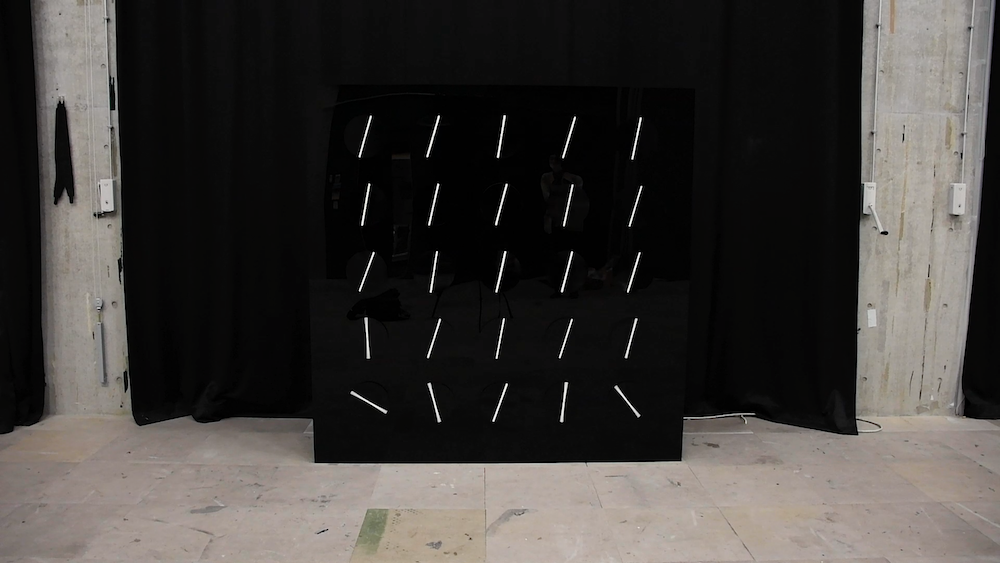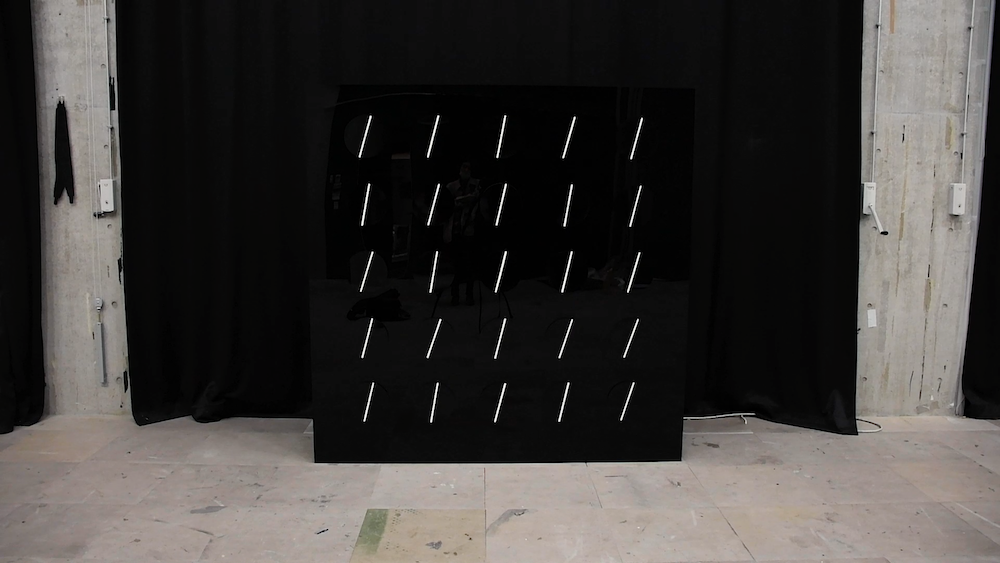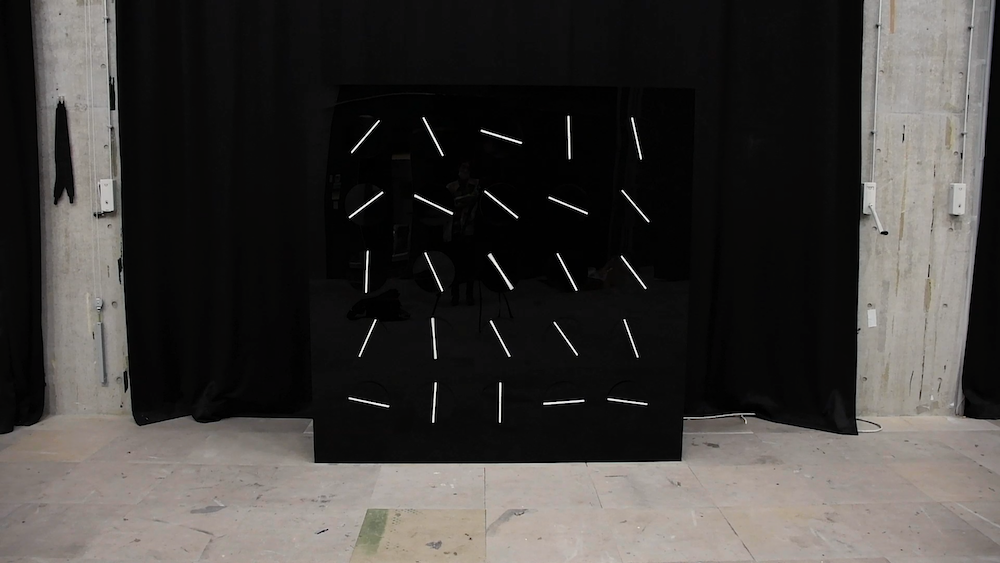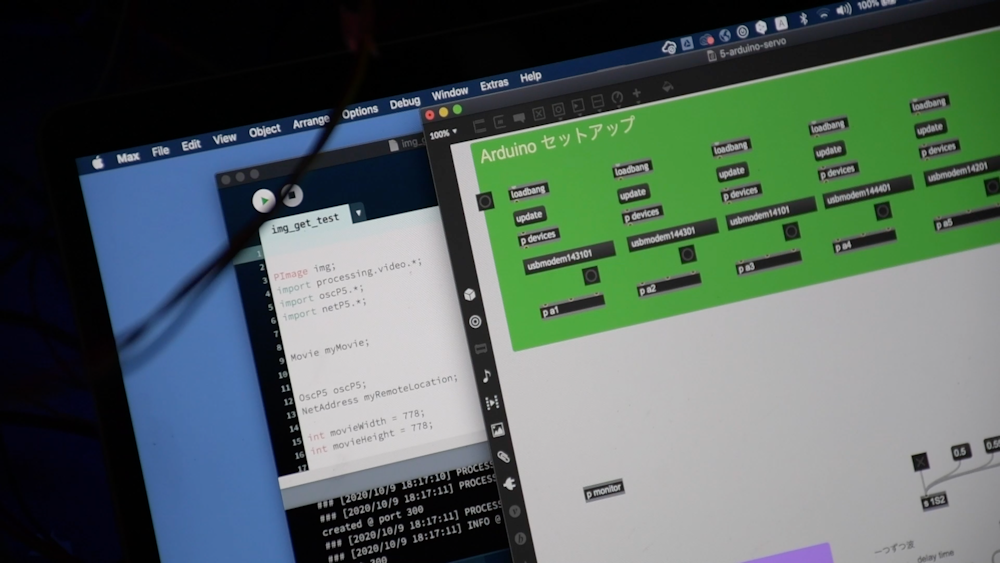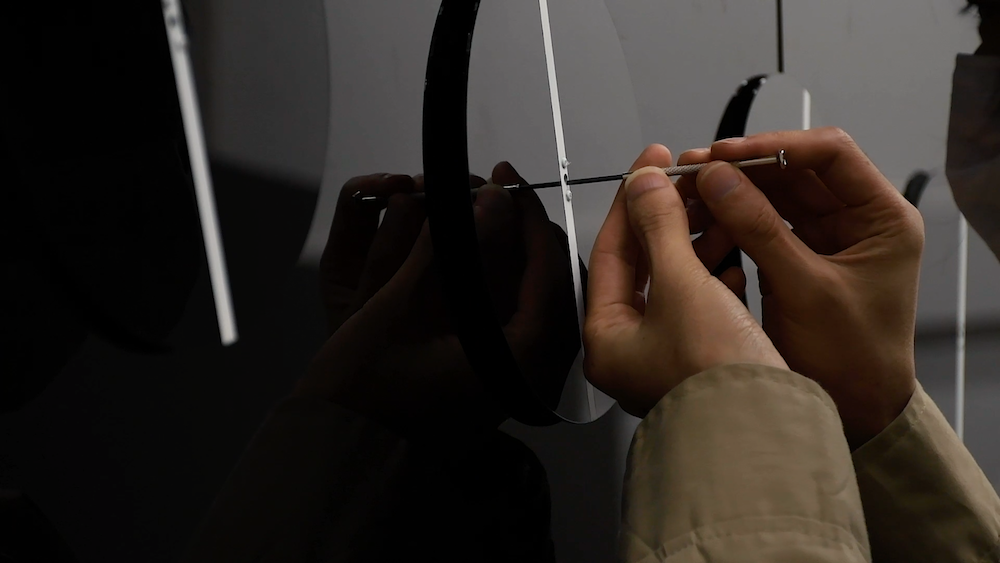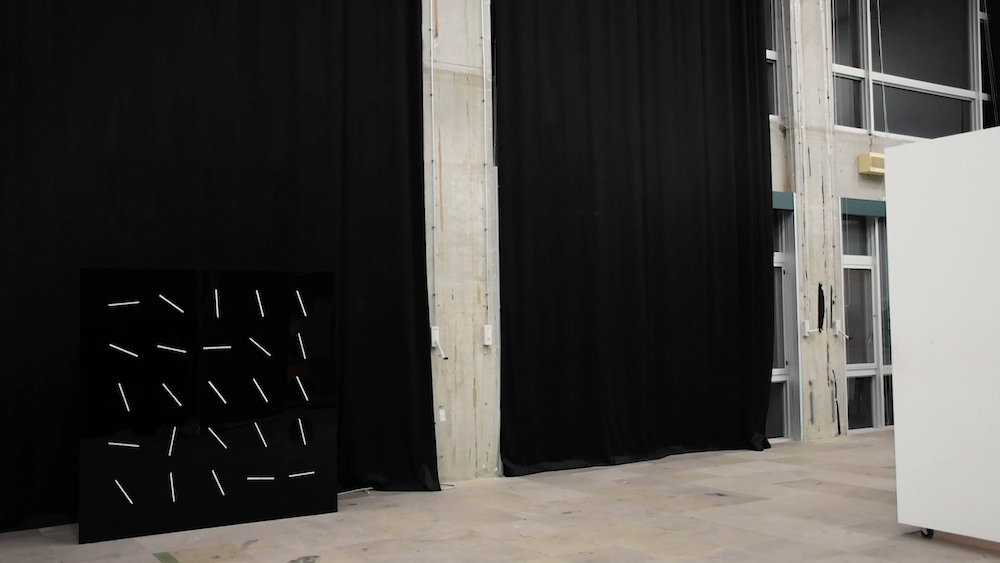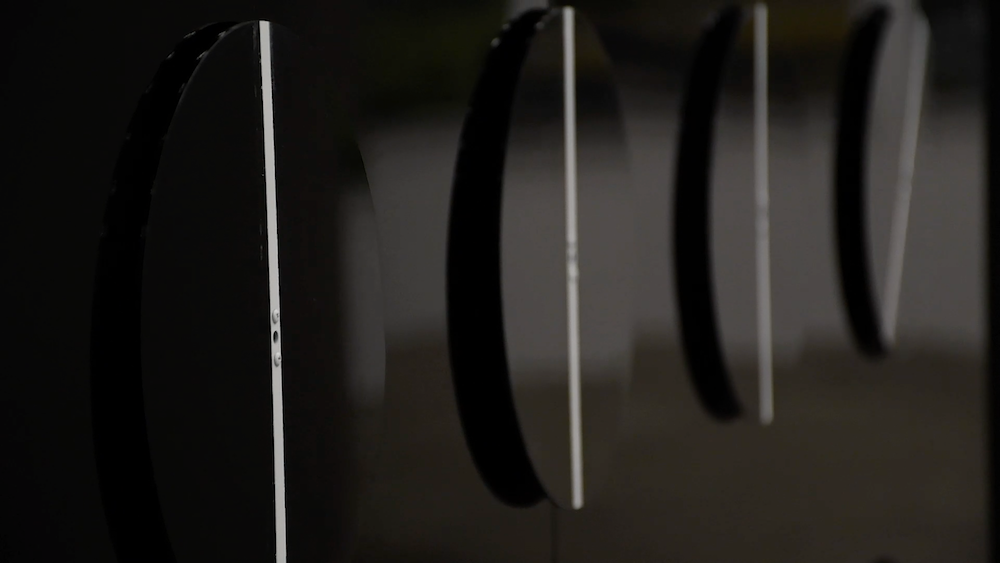
主体的輪郭
2020
常に動き続ける世界の中で、私たちは様々な事象を関連付け、そこにあらゆる種類の「輪郭」を見出している。「主観的輪郭」は、例えば各辺の一部が欠けた三角形を見ても、私たちがそこから三角形の輪郭を見出し得る現象である。それは見る行為が受動的ではなく、脳による補完を伴う能動的な行為であることを示唆している。また、視覚的情報だけでなく、時間軸上の関係性にも、私たちは「輪郭」を見出している。太陽が一定の間隔で昇って沈むことから、私たちは1日という単位の輪郭を定義づける。
この作品では、25本の線の回転運動の関連性によって、様々な輪郭が現れては消えていく。例えば、ある風景の映像をそれぞれの線の回転角度に当てはめ、リアルな回転運動によって描写することで、その風景の中に溶け込んだ連続性を極めてシンプルな形態によって表現する。また、それぞれの動きの規則性を様々に変化させることで、異なる規模や時間軸の「動き」の輪郭を、1つのグリッド上に配置された線の上に混在させることができる。
In a world in constant motion, we associate various events and find all kinds of 'contours' in them. 'Subjective contour' is a phenomenon whereby we can find the outline of a triangle, for example, when we look at a triangle with a part of each side missing. It suggests that the act of seeing is not passive, but an active act with brain completion. We also find 'contours' not only in visual information, but also in relationships on the time axis. As the sun rises and sets at regular intervals, we define the contours of the unit of a day.
In this work, various contours appear and disappear through the relationship between the rotational movements of the 25 lines. For example, by applying the image of a certain landscape to the angle of rotation of each line and depicting it through realistic rotational movements, the work expresses the continuity blended into the landscape through extremely simple forms. By varying the regularity of each movement, the contours of 'movement' on different scales and time frames can also be mixed on a single grid of lines.
